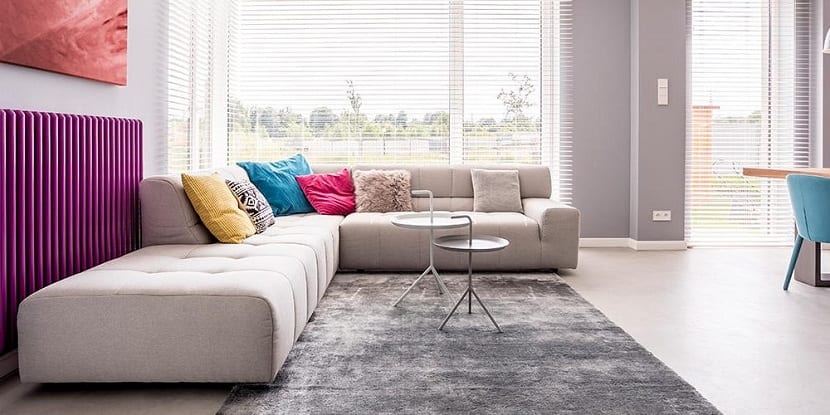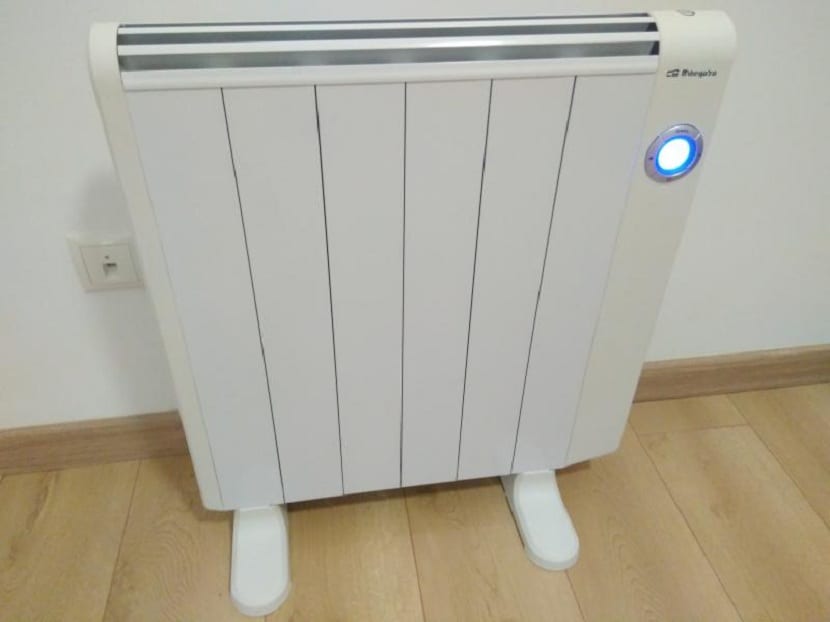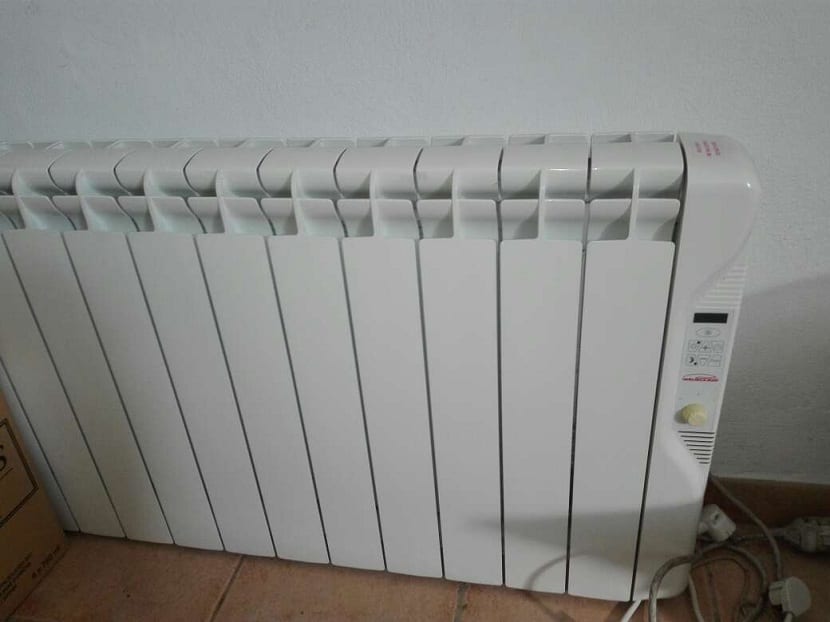
Possibly you have ever heard of the existence of blue heat. The blue heat radiators and increasing the heating efficiency with them. But, to what extent do you know this type of heat and do you know if it really is efficient? Perhaps it is another marketing strategy of companies that play with our needs to make us buy new, more "innovative" products.
In this article we will delve into what blue heat is, how it works and if it really is more efficient than others. Do you want to learn more about it?
What is blue heat?

Heat or blue energy is a term that is not entirely clear yet. Many people ask about it because doubts arise more and more. This term comes from the latest generation radiators. They are the evolution of the classic electric oil radiators since they also use resistors to heat. Specifically, they use blue heat, since they use a substance that is a heat transfer fluid called "Blue Sun".
That's where the name comes from both the heat and the new radiators. To understand what this blue heat is based on, you have to travel to 1841 where James Prescott discovered the Joule effect. This effect is what helps to determine if an electric current passes through a conductor. It is known because part of the kinetic energy of the electrons of the electric current, when passing through the fluid, is transformed into heat. This is the principle of blue heat radiators.
By an electric current that passes through the heat transfer fluid, it can be heated to give an increase in temperature in the room where it is located.
Heating advantages

To learn more about this type of heat, we are going to analyze both the advantages and disadvantages when using it.
- The main advantage it has is that can use probes to monitor temperature. In this way, they become significantly more accurate and prevent energy from being wasted. In the face of saving the electricity bill, this is a good aspect to consider.
- In general, they are similar to ordinary radiators. However, they differ in that, on the one hand, the liquid that replaces the oil of all life circulates inside and, on the other, that they have a timer. Again it is another element to take into account for savings. We can program it to have it as long as we want without wasting energy or money. The programmer also regulates the temperature.
- The air that the appliance expels from the top is distributed throughout the room. This way you get to heat it more effectively and quickly.
- They do not produce gases, odors or residues.
- The installation costs are much lower than those of the heat pumps. They have simple systems for fixing to the wall.
- Another aspect that stands out, less important, is that the design is more attractive than conventional ones. This aspect is after all aesthetic, but it is better to take it into account if it contributes to the design of your living room.
Disadvantages of its use

Just as blue heat radiators have advantages, they also have drawbacks when using them.
- On certain occasions, are capable of consuming more electricity, so they can be less efficient and more expensive than conventional heating systems.
- It could be said that the use of blue heat is more interesting in homes that are located in places with warmer climates and that it does not have to be used as often. In general, it is used for those situations where it does not have to be used for too long. Thus, we just have to program it, heat the room quickly and achieve comfort without much energy expenditure.
Consumption of blue heat radiators

To make a reference of consumption compared to common radiators, you have to see their performance. The efficiency of an appliance is the relationship between the heat generated by a radiator and the energy it consumes. Therefore, the performance of these radiators it is 100%, compared to 360% of heat pumps. This makes us see that energy production is more expensive.
If the system you want to use is to produce heat through electricity, because the home does not have a gas outlet, because there is no space to install a diesel tank, etc. You should consider the option of installing a heat pump or blue heat heaters.
Is it worth installing them at home?

After reading all about blue heat, from what it is to consumption, you surely have the question of whether it is worth installing it in your home and if it is going to be a huge expense. Well, let's go in parts. First, you have to know the entire marketing strategy that the blue heat has in the background. Probably, if a commercial came to our house selling common radiators, we would soon throw it out.
However, if they start talking to us about the blue heat, we would be at least intrigued. You have to accept that this blue heat thing sounds very good and seems to mention a whole technological revolution. This is not like this. It is just a common radiator that, instead of using oil, uses another type of fluid. Once the electrical current passes through it, it heats up and the air spreads throughout the room.
When is a blue heat radiator suitable for us and when is it not? It is very simple. In those places where, due to the climate or the living habits of the house, it does not have to be used for a long time or to heat many rooms. You have to take advantage of these radiators for specific uses and make use of the speed they have to heat a normal-sized room. If we need heating for longer, try other heating systems such as heat pumps or a Wi-Fi thermostat.
I hope that with this information you have learned about these radiators and that you are not fooled by the marketing strategies.